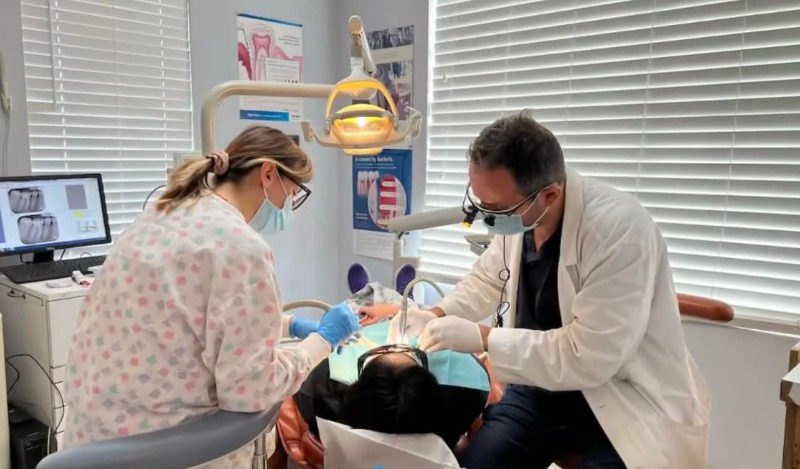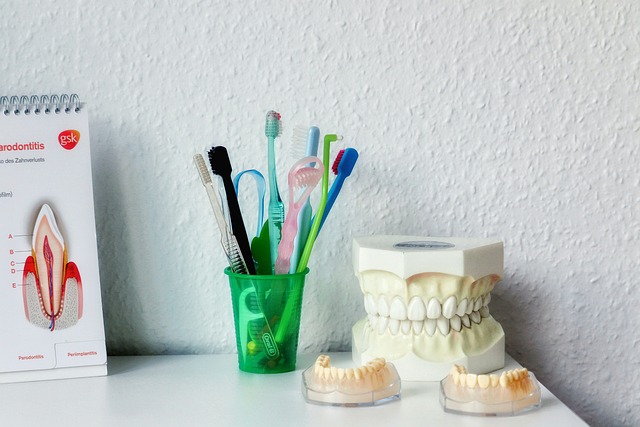
The Glendale sinus lift surgery is one of the main methods of increasing the volume of bone tissue and is used in dental implantation cases. Dentistry today offers a variety of techniques to solve the problem of restoring dentition with implants. The sine-lifting makes it possible to use implants of a longer length, due to the increase in bone mass.
If you have bone loss due to reasons such as tooth loss or periodontal disease, you may be left without enough bone to place implants. A key to successful implant placement is the quality and quantity of the bone at the place of implant installation.
Glendale sinus lift surgery can help correct this problem. The problem is solved by raising the sinus floor and growing the bone for the placement of dental implants. There are several techniques to raise the sinus and allow new bone formation. Glendale dentist, Dr. Sahakyan, who has great experience in successfully carrying out sinus lift procedures, can help you. Call 1-818-578-2324 for a consultation now.
Causes of lowering of sinuses
There are a number of factors that cause the lowering of the sinuses:
- Inflammation of the maxillary sinuses
- Long-time tooth loss without the essential treatment
- Missing teeth due to genetics or birth defect
- Enhanced bone resorption
- Trauma
What Is Sinus Lift?
A sinus lift, which is also termed a sinus graft, and sinus floor augmentation is a dental surgical procedures. Sinus lift surgery is the restoration of the volume of bone tissue. The volume of the sinus is achieved, which is necessary for the successful and safe installation of the implant. The key factor is to accurately determine the distance between the lower edge of the jaw and the bottom of the maxillary sinus, the height of the bone on the upper jaw.
Above the upper jawbone, is the maxillary sinus. When the jawbone volume is too small to accommodate dental implants, sinus lift surgery is performed.
Therefore, it is impossible to establish a dental implant without first increasing the bone height. It is necessary to insert a new bone between the already existing jaw bone and the mucosa of the sinus. Then the total bone size will be sufficient to install a dental implant.
Indications for sinus-lifting
The essence of sinus lift surgery is that through a thin hole in the gum and bones the Glendale dentist shifts the bottom of the maxillary sinus or nasal sinus. At the same time, the bottom portion is moved upward from the original level, and the liberated space is filled with a synthetic bone. This synthetic material is later gradually healed.
Indications for implantation are individual for each patient. In one case, the operation can be performed immediately after the sinus lift procedure, and in the other – six months after the gum is completely healed.
How Is The Sinus Lift Performed?

The work of a dentist is divided into separate stages, during which the survey, preparation, and procedure itself are conducted.
- Studying the general condition of the patient. Before the beginning of the operation, the oral cavity is sanitized. All teeth problems are treated.
- The measurement of bone height.
- Computer tomography is necessary to create a three-dimensional model of the jaw with an adjacent portion of the maxillary sinus. Dr. Sahakyan, Glendale Dentist requires X-ray images and CT scans, in order to choose the correct method.
- Calculation of the consumption of material, which will be replaced by absent bone tissue.
Sinus Lift Technique
The procedure is performed under general anesthesia. In the bone, the dentist drills a bed into the future implant. The most important thing at this stage is not to violate the integrity of the mucous membrane of the bottom of the maxillary sinus. Next, it is necessary to displace the mucous membrane lining the bottom of the maxillary sinus, lifting it upwards. This can be done by various hand tools or special mechanical devices.
A free space is created in the region of the sinus floor, which is filled with bone material. Various bone materials can be used:
- autogenous bone – bone of your own body. Own bone is taken from the lower jaw, in particular, from the branch area, or the chin;
- xenograft – from cow bone;
- allogeneic bone – cadaver bone.
Bone material is inserted through the hole created in the bone under the implant. After insertion of the material, the implant itself is screwed in, and the mucosa over it is sutured.
Open and Closed Sinus Lift
When installing implants in the area of the maxillary sinuses, a dentist can use one of two basic techniques:
The choice of the technique traditionally depends on the thickness of the jaw bone in the area where implantation is planned.
Closed sinus lift
A closed sinus lift is a procedure of lifting the maxillary through the bed of the future implant. If the thickness of the bone between the maxillary sinuses is 7-8 mm, a closed sinus lift is used. The technique is simple. The material replacing bone tissue is delivered through the same small incision that will be used to insert the implant. After this, there is a thickening of the bottom of the maxillary sinus, which is necessary for safe operation. For patients, this type of intervention is a more attractive treatment option due to the sparing approach.
Open sinus lift
An open sinus lift is necessary in cases where the jaw selected for implantation has a bone thickness of up to 7 mm. An open sinus lift is a procedure for lifting the maxillary sinus through an additional window on the outer surface of the alveolar process.
Open sinus lift surgery is rather complicated. It is prescribed for severe bone failure along the sides of the upper jaws. The open sinus lift is executed like this:
- A small hole is made outside the sinus wall so that the mucous membrane is not affected. The mucous membrane is raised to the required height.
- The free space is filled with special materials for building up. Partially the tissue and mucous membrane that was peeled off before, come back together and are sewed up. After some time, the required bone volume is formed. Then the implantation is performed.
- The bone usually will be allowed to develop for about 4 to 12 months before implants can be placed. After the implant is placed, an added healing term is required. Sometimes, the implant can be placed at the time when the sinus is added.
The difference between closed and open techniques is that the first is a more sparing intervention. The sinus floor is neatly moved through the implant bed with an osteotomy or surgical cutter. If the sinus lift is open, the filling of the cavity with the osteoplastic material is carried out through a small opening in the sidewall of the sinus with the help of specialized instruments.
Care Instructions After Sinus Lift

After sinus lift surgery Glendale dentist, Dr. Sahakyan, recommends:
- To make the most of the cold in the area of intervention. This will help minimize swelling in the soft tissues of the cheeks after surgery.
- For the same purpose, you can not take hot food or bath. But these restrictions apply only to the first few days.
- Eliminate hard foods from your diet for a week. Chew only on the opposite side.
- Maintaining oral hygiene at a high level and not smoking is a prerequisite.
Sinus lift surgery has shown effective results when you want successful implants for years. The meaning of a sinus lift surgery is to carefully raise the envelope covering the bottom of the maxillary sinus. In the formed space under the membrane, the best Glendale Dentist places the plastic material. As a result, the volume and height of the alveolar process increase, and the volume of the nasal sinus decreases. If you have a terminal defect, and you need a sinus lift, call us at 1-818-578-2324 or contact us to schedule an appointment today.
